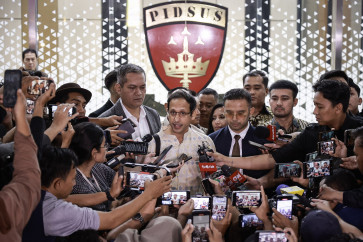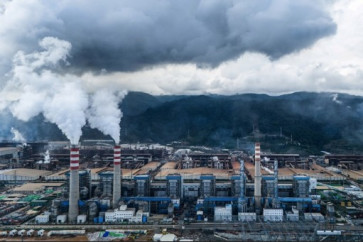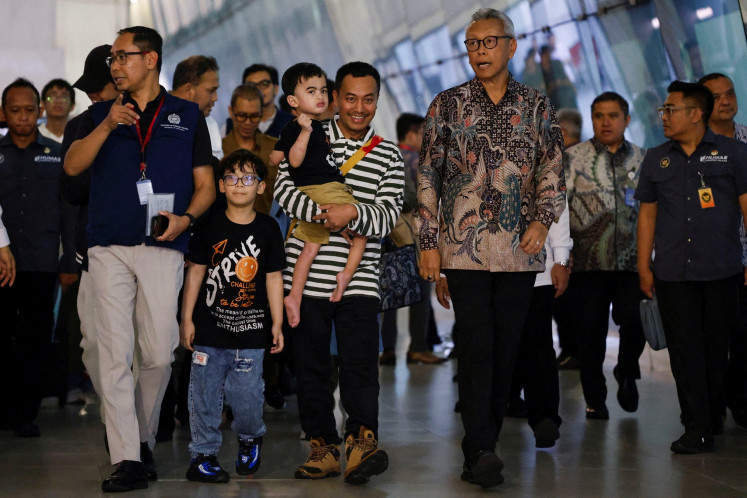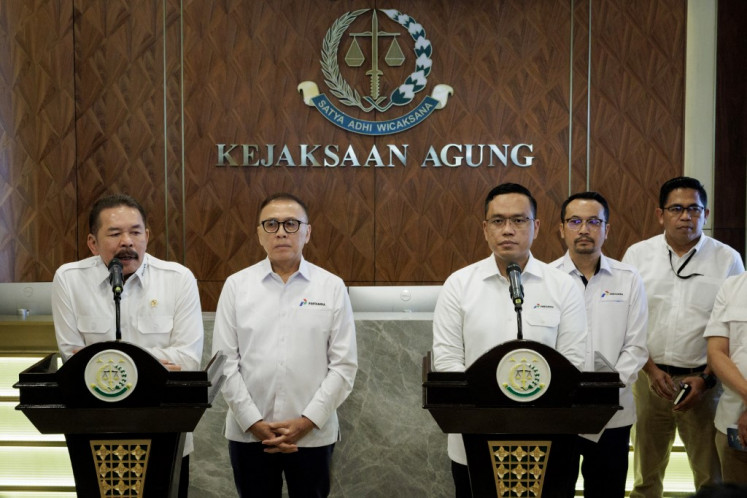Popular Reads
Top Results
Can't find what you're looking for?
View all search resultsPopular Reads
Top Results
Can't find what you're looking for?
View all search resultsJakarta’s jams reemerge as pandemic fades
City must find way to make public transportation more attractive: Expert.
Change text size
Gift Premium Articles
to Anyone

A
s Indonesia gradually moves on from the COVID-19 pandemic with the end of curbs earlier this year, Jakarta commuters are also getting reacquainted with the city’s notorious traffic congestion, with data showing that Jakarta’s traffic has largely returned to pre-pandemic levels.
“In 2019, Jakarta’s congestion level was at 53 percent. [...] By 2021, we’d improved to [34 percent] because of the pandemic, but in 2022, we estimate that the congestion level is already back to above 50 percent,” Jakarta Police traffic director Sr. Comr. Latif Usman said recently.
Data from TomTom Traffic Index corroborates this, showing that morning and evening rush hour traffic on weekdays in the past week has largely risen to pre-pandemic levels. On Tuesday, TomTom recorded a 57 percent congestion level at 8 a.m., far above the 37 percent level recorded in 2021, and a few points behind the 62 percent recorded in 2019.
Based on traffic data in 2022, the Jakarta Police’s traffic division estimated that commuters lost around 30 minutes per trip on average, costing the country around Rp 70 trillion (US$4.69 billion) in total throughout the year.
Head of the Jakarta chapter of the Indonesia Transport Society (MTI) Yusa Permana went further and said that the city’s congestion level was more akin to 2015, when Jakarta’s public transportation network was not as refined as it is now.
“People have gotten used to not commuting [because of the pandemic]. And when they do commute, they now prefer the comfort of their own private vehicles,” Yusa told The Jakarta Post.
To alleviate Jakarta’s congestion problem, the transportation researcher said that Jakarta must find a way to make public transportation attractive to this demographic.
Read also: Yearender 2022: Two steps forward, one step back for Jakarta public transportation
In its experience, MTI has often met with people who are selective in choosing their modes of public transportation based on the perceived level of service. “We’ve spoken to people who are willing to ride the bus, but not [JakLingko minivans]. And there are others who are willing to ride trains, but not buses,” Yusa said.
Average daily passengers
The numbers reflect this as well, with MRT Jakarta being the only public transportation mode whose daily ridership has gone back to pre-pandemic levels. In January, the company reported an average of 83,617 daily passengers, largely similar to the 88,444 daily average MRT Jakarta reported in February 2020, when the coronavirus had yet to be detected in the country.
By contrast, city-owned bus service TransJakarta reported in December 2022 an average of 820,000 daily passengers, falling somewhat short of the 1 million passengers milestone the bus operator reached before the pandemic. Long wait times remain a problem for TransJakarta, especially for buses serving the less busy routes.
In response, interim Jakarta governor Heru Budi Hartono said that he was planning to talk with TransJakarta executives about expanding their fleet in order to reduce wait times. “We will direct people to use public transportation, and hopefully this will [reduce the congestion level],” said Heru as quoted by Tempo.co.
According to Jakarta Transportation Agency head Syafrin Liputo, the bus operator currently has 4,700 buses in operation capable of transporting 1.2 million passengers per day, which is still considerably higher than the current daily ridership.
Along with the Greater Jakarta light rail transit (LRT Jabodebek), which is set to begin operation in July, Syafrin said that TransJakarta was well equipped to handle the expected passenger increase resulting from the planned implementation of the electronic road pricing (ERP) policy across several of Jakarta’s main thoroughfares.
Read also: Opinions divided over Jakarta’s electronic road pricing initiative
“We will continually improve the quality and capacity of public transportation in the Greater Jakarta area [to support the implementation of the ERP],” said Syafrin in January as quoted by Tempo.co.
The debate around the long-gestating ERP policy, which has been in the works since 2007 during the time of then-governor Sutiyoso, resurfaced after plans for the policy were listed under Jakarta’s draft regulations. According to the latest draft, the ERP system will charge cars and motorcycles that use any of Jakarta’s 25 main thoroughfares.
But looking at how the odd-even policy, an alternate-day travel based on license plate numbers that was started in 2016, has failed to make a significant impact on traffic, Yusa said the ERP alone would not be enough. “The city will have to complement this by improving public transportation. With the current level of service, people won’t migrate to public transportation,” he said.









